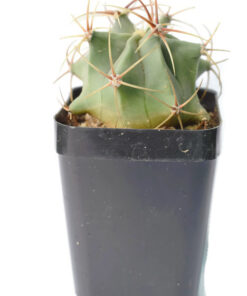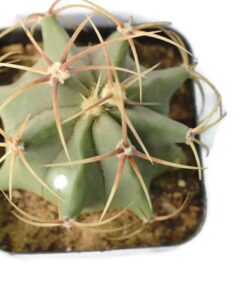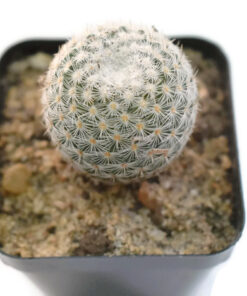Astrophytum myriostigma Nudum medium Size Cactus Live plant
₹299.00
In stock
SKU: Astrophytummyriostigmanudum-1
Category: Cactus
Growing Astrophytum myriostigma Nudum
Astrophytum myriostigma Nudum is an attractive, spineless cactus with its slender, green, geometric body. It is native to Mexico and easy to grow, which is one reason it’s so popular with collectors. If you give it the right conditions, you can keep your plant healthy as well as encourage good growth.
| Number of plants | 1 |
|---|---|
| Growing month | Feb to Oct |
| Temperature | above 30C |
| Sun | Under white shade net |
| Blooming period | spring |
Selecting the Right Soil
One of the most effective well-draining potting mixes on the market should be used to prevent root rot. A mix of cactus mix, pumice, and coarse sand should provide air exchange. Fungal disease can develop in heavy water-retaining soils.
Astrophytum myriostigma Nudum Light Requirements
Strong light is needed for maximum growth. Place your Astrophytum in a location where it will get at least six hours of indirect sunlight a day. If indoors, position it close to a south window or supplement it with a grow lamp. Never, however, place it suddenly under direct sun because it will sunburn.
Watering Schedule
Astrophytum myriostigma Nudum is xerophilic. Water very sparingly and allow soil to completely dry out between waterings. Give Water every two weeks in the growing season (spring-summer). Water less in fall and allow plants to come close to drying out in winter rest.
Astrophytum myriostigma Nudum Temperature and Humidity
Hot and dry weather is what the plant requires. Use 70-85°F (21-29°C) temperature during growth stages. Use temperature between 50°F+ (10°C+) to avoid cold temperature injury in winter. Minimum humidity is required by the plant, so place the plant away from places where humidity is high.
Fertilization
Feeding during the growing season will encourage healthy growth. Feed monthly in spring and summer with a dilute cactus fertilizer. Don’t over-feed, as this will kill the plant.
Astrophytum myriostigma Nudum Potting and Repotting
Select a pot with evenly spaced drainage holes so as not to clog the water. Repot the plants every two or three years in an attempt to feed the soil and provide space for it to grow. Repot gently and do not destroy the sensitive roots.
Issues and Solutions
- Excessive watering: Most frequent issue. Excessive water shows with soft leaves or yellowing leaves. But Let the soil dry completely between waterings.
- Insect Infestations: Spider mites and mealybugs ought to be checked from time to time. Wipe them off with a cotton swab and alcohol or spray them with insecticidal soap and kill the bugs.
- Sunburn: If the plant becomes reddish or brown, it probably gets too much direct sunlight. Replot it in a little more shaded location.
Delightfully Showing Off Your Astrophytum
Astrophytum myriostigma Nudum will thrive for many years with proper care, forming beautiful star-shaped shapes and rare yellow blooms. By taking these recommendations, you will be in a position to grow a long-lived, vigorous cactus that adds a touch of its singular beauty to your collection also.
| Color | Golden |
|---|---|
| Ideal location | partial sun with white net |
| Growth Pattern | Globular |
| Origin Country | India |
Be the first to review “Astrophytum myriostigma Nudum medium Size Cactus Live plant” Cancel reply
You must be logged in to post a review.





















Reviews
There are no reviews yet.